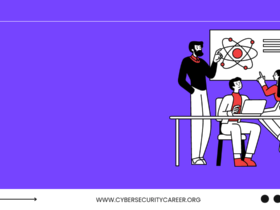“Are you worried about the safety of your sensitive data and online assets? In today’s digital age, cyber attacks are becoming more frequent and sophisticated, making it crucial for businesses and individuals to conduct a thorough cyber security risk assessment. But where do you start? Don’t worry, we’ve got you covered! In this blog post, we’ll guide you through the essential steps on how to conduct a comprehensive cyber security risk assessment that will help safeguard your organization from potential threats. So let’s dive in!”
What is Cyber Security?
Most people have heard of the term “cyber security,” but what does it really mean? Cyber security is the practice of protecting electronic information from unauthorized access or theft. This includes data stored on computers, servers, and other devices connected to the internet.
There are many different types of cyber security threats, including viruses, malware, phishing scams, and Denial of Service (DoS) attacks. These threats can jeopardize the confidentiality, integrity, and availability of an organization’s data and systems. That’s why it’s important for businesses to conduct a cyber security risk assessment to identify potential vulnerabilities and take steps to mitigate them.
A cyber security risk assessment is a process for identifying and assessing the risks posed by potential cyber security threats. It involves identifying assets and systems that are most at risk, analyzing the likelihood and impact of potential threats, and developing mitigation strategies.
The first step in conducting a cyber security risk assessment is to identify which assets and systems are most critical to the organization. This includes both physical and electronic assets such as computers, servers, networks, databases, applications, and websites. Once critical assets have been identified, the next step is to analyze the likelihood and impact of potential threats. This analysis should consider both internal and external factors such as the nature of the threat (e.g., virus, malware), its source (e.g., malicious insider), its target (e.g., confidential data
Why do Cyber Security Risk Assessments?
Cyber security risk assessments are important because they help organizations identify, assess, and manage the risks associated with their use of technology. By understanding the risks, organizations can make informed decisions about how to protect themselves and their data. Additionally, risk assessments can help organizations avoid or mitigate the impact of cyber incidents.
The Steps of a Cyber Security Risk Assessment
In order to properly assess the risks associated with cyber security, organizations must follow a systematic and comprehensive approach. There are generally six steps involved in conducting a cyber security risk assessment:
1) Identify assets: The first step is to identify all of the organization’s critical assets, including data, systems, and networks.
2) Identify vulnerabilities: Once all assets have been identified, the next step is to identify any vulnerabilities that could potentially be exploited by attackers.
3) Identify threats: The third step is to identify the threats that exist in the environment, both external and internal.
4) Determine likelihood and impact: Once all threats have been identified, the fourth step is to determine the likelihood of each threat being realized and the potential impact on the organization if it were to occur.
5) Rate and prioritize risks: The fifth step is to rate and prioritize each risk based on the likelihood and impact determined in the previous step.
6) Develop mitigation strategies: The final step is to develop mitigation strategies for each of the highest priority risks. These strategies should aim to reduce either the likelihood or impact of a threat being realized.
Who Should Conduct Cyber Security Risk Assessments?
There is no single answer to this question, as the best person to conduct a cyber security risk assessment will vary depending on the specific organization and its needs. However, in general, it is recommended that cyber security risk assessments be conducted by a team of experts with experience in both information security and business operations. This team should work together to identify and assess the risks faced by the organization, and then develop mitigation strategies to reduce these risks.
Cyber Security Risk Assessment Tools
There are many different cyber security risk assessment tools available, each with its own benefits and drawbacks. To choose the right tool for your needs, you must first understand the types of risks you are trying to assess.
The most common type of risk is financial risk, which encompasses the potential for loss due to cyber attacks. Financial risk assessment tools will help you quantify the potential financial impact of a successful attack on your organization.
Operational risk assesses the potential for disruptions to your operations due to cyber attacks. This includes the loss of critical data or systems, as well as the costs associated with recovery and business continuity. Operational risk assessment tools will help you identify and quantify these risks.
Reputational risk assesses the potential for damage to your reputation due to cyber attacks. This can include negative media coverage, loss of customer confidence, and legal liability. Reputational risk assessment tools will help you identify and quantify these risks.
Once you have identified the types of risks you need to assess, you can select the appropriate tool or combination of tools. There is no single “best” tool, so it is important to choose one that fits your specific needs.
Conclusion
Cyber security is a critical part of any business, as it helps protect your data and systems from malicious attacks. By following the steps outlined in this article on how to conduct a cyber security risk assessment, you can help ensure that your company is up-to-date with its cyber security practices and doing all that it can to keep itself safe from harm. It’s important to remember though that there is no one size fits all approach when it comes to cyber security, so make sure you consult professionals if needed and regularly assess your system for potential vulnerabilities.










Leave a Reply